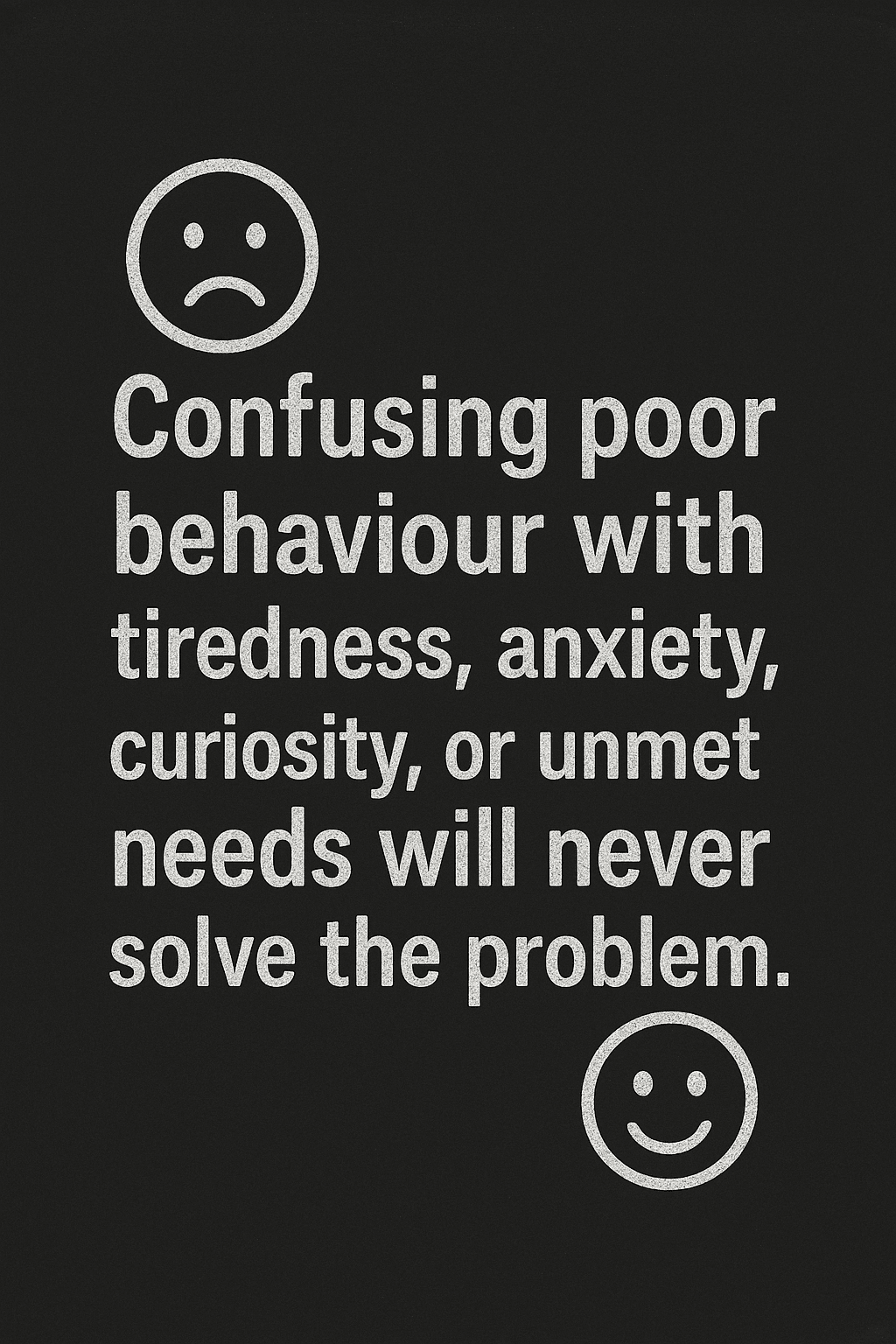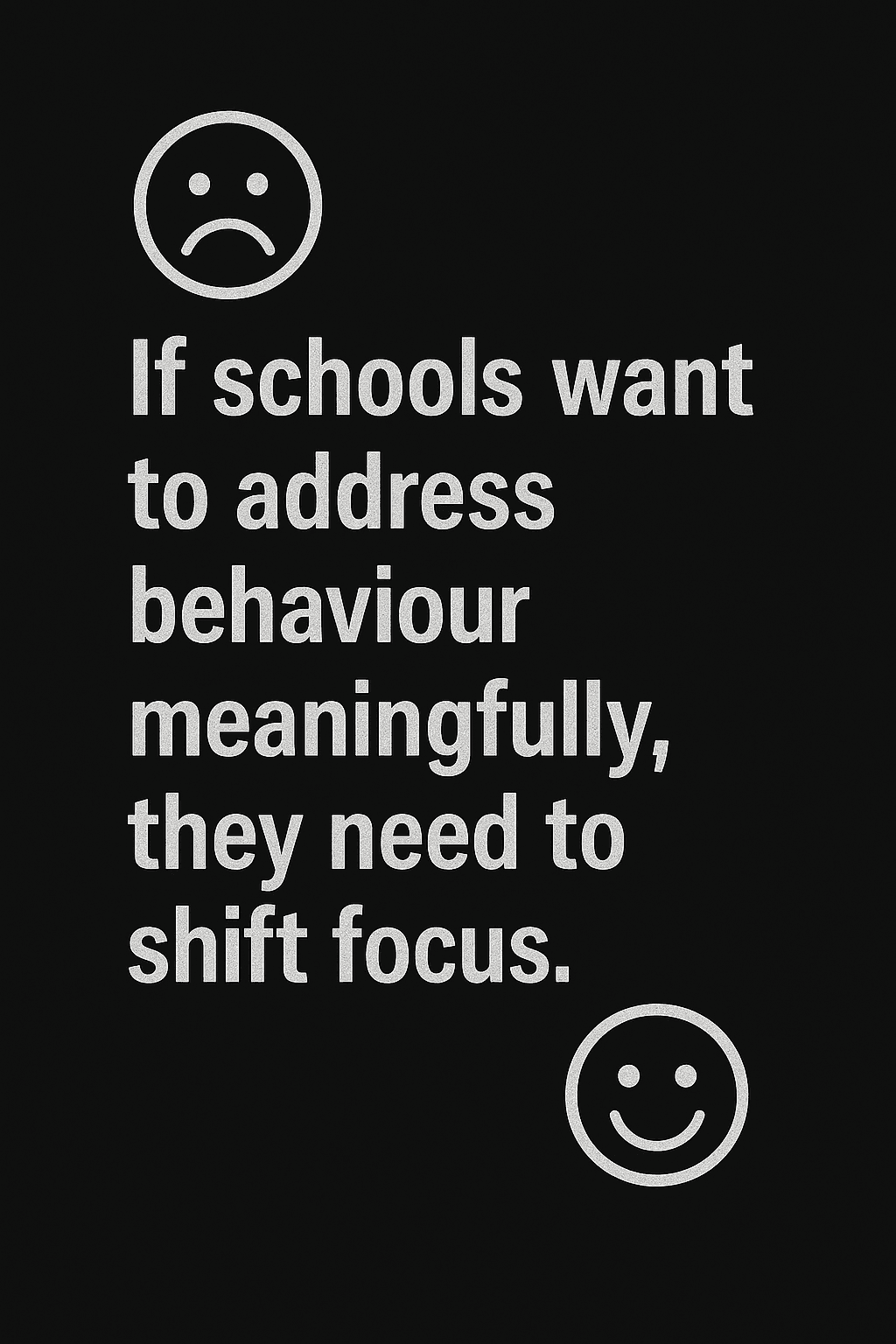The conversation about behaviour in schools is getting louder. Headlines warn of classrooms “out of control”, politicians call for tougher measures, and schools themselves often respond with ever-stricter behaviour systems. Detentions, isolation rooms, behaviour points, and apps that update parents minute by minute have become normalised in many schools.
Are these strategies actually improving behaviour? Or are they confusing what behaviour really is, mistaking the symptoms of deeper struggles for defiance, and alienating the very children they are supposed to help?
Actor Anna Maxwell Martin recently described fines for non-attendance as “cruel” and “idiotic”, pointing out that punitive approaches don’t resolve the challenges families face, they simply add pressure. Her words highlight a truth we urgently need to confront: punishment is not a shortcut to better behaviour.
The Rise of Micromanagement
Across the UK, many schools now run behaviour systems that record every detail of a child’s day: the way they sit on a chair, the speed they complete a task, whether they speak without permission, or if they dare to stop and refill a water bottle on the way to class. Points are issued instantly. Parents can track behaviour in real time on an app.
On the surface, these systems look efficient. They create data, they promise consistency, and they appear to put “order” back into classrooms. Beneath the surface, however, the reality is stark. Children quickly learn that their school is less interested in who they are and more interested in catching them out.
When every small movement or mistake is logged as poor behaviour, shown on a pie chart, the message children receive is not “we believe in you” but “we are waiting for you to fail.”
The Hidden Cost of Behaviour Apps
Alongside detentions and behaviour points, many schools now rely on these apps that update parents instantly whenever a child is sanctioned. On the surface, this looks like transparency. In practice, it creates a culture of continuous anxiety. Parents receive notifications throughout the day and are left worrying about what their child has done, often before the school day has even finished.
Instead of building trust, these apps can damage relationships at home. Parents may feel pressured to “follow up” every negative point, turning the journey home or the evening after work and school, into an interrogation and leaving children with little space to decompress. The result is family conversations dominated by sanctions rather than learning, and a growing sense on both sides that school is a hostile, punitive force rather than a place of growth.
When technology is used this way, it does not strengthen the partnership between schools and families. It undermines it—by positioning parents as enforcers, and children as problems to be managed.
Confusing Behaviour with Struggle
The problem with these systems is that they confuse behaviour with the deeper issues behind it. A child who slumps in their chair might be exhausted, ill, or overwhelmed—not “defiant”. A pupil who works slowly may be processing carefully, trying hard to concentrate or come up with ideas, struggling with undiagnosed needs, or simply tired from life outside school. A teenager who challenges a teacher’s comment may be curious, critical, or attempting to clarify—not automatically “disrespectful”.
By treating every action as a behaviour to punish, schools risk missing the real picture. They ignore the context, the communication, and the child. Instead of asking why a child is struggling, the system simply records that they are – behaving poorly.
Punishment Doesn’t Build Respect
It is tempting to believe that harsher punishments create better behaviour. The evidence, and common sense, suggest otherwise. Fear might produce short-term compliance, but it does not produce respect, motivation, or a love of learning.
When children are repeatedly sanctioned for minor or arbitrary things, they do not learn to behave better—they learn to see school as unfair, outdated, and disconnected from real life. They disengage. They deregulate. They stop trying.
The irony is that the very policies intended to enforce discipline often fuel the very disengagement schools then complain about. A child endlessly punished for not meeting rigid expectations will eventually conclude: “Why bother?”
What Children Actually Need
Children learn best when they feel safe, valued, and understood. They thrive when they know their teachers see them as individuals, not as points on an app. They work harder when they feel appreciated and respected, not surveilled and controlled.
The best behaviour in schools comes not from fear of punishment but from trust—the trust that teachers care, that classrooms are safe places to take risks, and that mistakes are part of learning, not crimes to be punished.
If we want children to behave, we need to make schools environments worth behaving in. That means classrooms where curiosity is celebrated, where well-being is prioritised, and where behaviour is understood as communication, not simply compliance.
It is also worth remembering that the teachers who capture children’s imaginations and their respect are not the ones handing out points and detentions. They are the ones who start from a place of kindness, with a sprinkle of humour. These teachers create classrooms filled with humanity, laughter, and trust. For many children, they are the difference between disengagement and a lifelong love of learning. These people are absolute gems in our schools—and they show us that respect is earned through care, not fear.
Isolation: The Harshest Example
Perhaps the most concerning trend is the use of isolation. In some schools, pupils are placed alone or with other ‘miss-behaved” children in rooms where they are often expected to just sit and do nothing, often for simply challenging a teacher or failing to meet expectations.
Supporters argue that isolation removes disruption and teaches accountability and reflection. In reality, it strips away connection, belonging, and the very relationships that make learning possible. For many children, particularly those with additional needs, isolation is not a lesson—it is a trauma.
To tell a child that asking a question, moving at the wrong pace, or daring to voice disagreement deserves to be shut away is wildly out of touch with how children develop and how humans learn.
A Different Vision
If schools want to address behaviour meaningfully, they need to shift focus. Instead of asking “How do we punish children into behaving?”, they should ask:
- What unmet needs are showing up here?
- What is this behaviour communicating?
- How can we create an environment that helps this child regulate, engage, and belong?
This is not about abandoning boundaries. Children need structure and guidance. However, boundaries should be paired with compassion, not punishment. The aim should be to teach children how to manage themselves, not to break them into compliance.
Learning from Anna Maxwell Martin’s Challenge
Anna Maxwell Martin’s critique of fines for non-attendance and the approaches of schools to SEND is a reminder that our current trajectory is unsustainable. When schools respond to challenges by tightening the screw—more sanctions, more monitoring, more punishment—they may feel in control, but they are building a system that children experience as hostile.
Hostile environments do not nurture learners. They create fear, resentment, and a belief that school is not for them.
If instead we chose to respond with curiosity, support, and flexibility, we would not only see better behaviour—we would see happier, healthier, more motivated children.
Why I Care About This
In short, this is personal.
My perspective on education comes from several angles. Both of my parents were teachers who worked tirelessly to be the change some children needed—advocating for those who struggled, and making learning fun, inclusive, and something to be valued. Their example shaped my own outlook.
With a background in sociology, I tend to see education as more than just classrooms and exams. To me, it’s a system that can either hold children back by reinforcing inequalities, or open doors by helping them imagine and build something better. Alongside this, I have many years’ experience as a parent governor, local authority governor, and Chair of Governors.
I am also a parent of four children who have each had very different experiences of education. Through them, I’ve encountered a wide range of teachers—some of the very best, who inspire and uplift, and some who sadly reinforce why change is needed. These combined experiences give me both the professional curiosity and the personal stake to question the way behaviour in schools is being managed today.
Conclusion
Behaviour in schools is not about points, apps, or detentions. It is about relationships. It is about trust. It is about creating spaces where children want to learn and feel able to succeed.
Confusing poor behaviour with tiredness, anxiety, curiosity, or unmet needs will never solve the problem. Punishment will never create respect. What children need is to feel safe, valued, and understood.
Unless schools recognise that, we risk continuing down a path where children are policed rather than taught, punished rather than supported, and pushed away rather than brought in.
The cost of that—for children, for families, and for society—is far too high.





3 comments
Hear! hear! Very well said.
Children need encouragement, a stimulating environment and the opportunity to ask questions and express their views in a non-hostile atmosphere. They need to engage with their learning without being fearful of saying or doing the wrong thing. My question is this – how much more meaningful teaching could teachers be doing without all the box ticking and monitoring they are required to do?
A great deal – and now we have the technology to massively reduce what is currently required.
Really appreciate this perspective. So much of what’s happening in schools now feels like micromanaging kids instead of actually understanding them. Behaviour apps, instant sanctions, isolation rooms, best geometry dash game… it all creates anxiety without solving anything. I wish more schools focused on relationships and curiosity instead of punishment—kids deserve environments that help them feel safe, not watched.